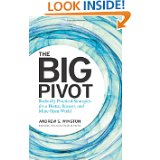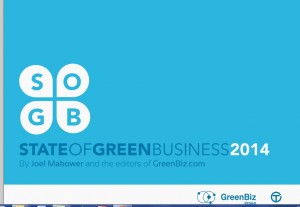Here it is – the end of my short summary of Andrew Winston’s book “The Big Pivot.” The last chapter is called “Build a Resilient, Antifragile Company.”
By “antifragile”, he means a company that doesn’t just survive, but gets better. Like a muscle that strengthens when you exercise it.
“You build resilience to protect yourself from the fact that you don’t know what will happen.” According to Winston, “We need systems that deal well with volatility and uncertainty.”
Foundations of a Resilient Business Include:
- Diversity – of ideas and perspectives makes an organization stronger.
- Redundancy, with buffers – Businesses dislike redundancy because it seems like waste. But when auto manufacturers got critical parts from just one supplier – and that supplier’s factory flooded – their operations screeched to a halt. Millions of dollars were lost. Buffers are “the margins that provide the short term breathing space needed to absorb shocks.” Why wouldn’t we set up our businesses with some buffers to better handle extreme situations, especially as those situations are happening more frequently?
- Speed: Fast Feedback and Failure – real time feedback is powerful. Energy meters that show homeowners their energy use, right now, change behavior. People turn off the lights and ease back on the air conditioning. We also need to fail quickly and reward people for trying, no matter what the outcome. Each failure can points us in new, more promising directions.
- Modular and distributed design – for example, distributed power systems would protect us from the large, disruptive power outages we have now.
According to Winston, the “Big Pivot” has to come from the top – the C-Suite. (While I agree, I am less optimistic that these guys will make the right decisions.)
Finally, there will be winners and losers. In Winston’s view, the vast majority of us will win in this new world, if for no other reason than that “ensuring our survival is a pretty big victory.”
My favorite lines from the book
I started out bookmarking pages of the book on my Kindle. I stopped because almost every page had an eye-popping statistic or gem of a story. The 5 lines below are just a taste of what’s in the book. Enjoy!
- “It’s ludicrous to prioritize short-term profit at the cost of our very survival.”
- “What if the (stock) market is irrational? Would we be making strategic decisions based on the demands of a raving lunatic?”
- “Business needs to treat government – which is the representation of our collective wills – as a partner, not an enemy.”
- “ROI is broken.”
- “When companies say they can’t sell greener products because customers don’t want them, it’s a cop out.”


